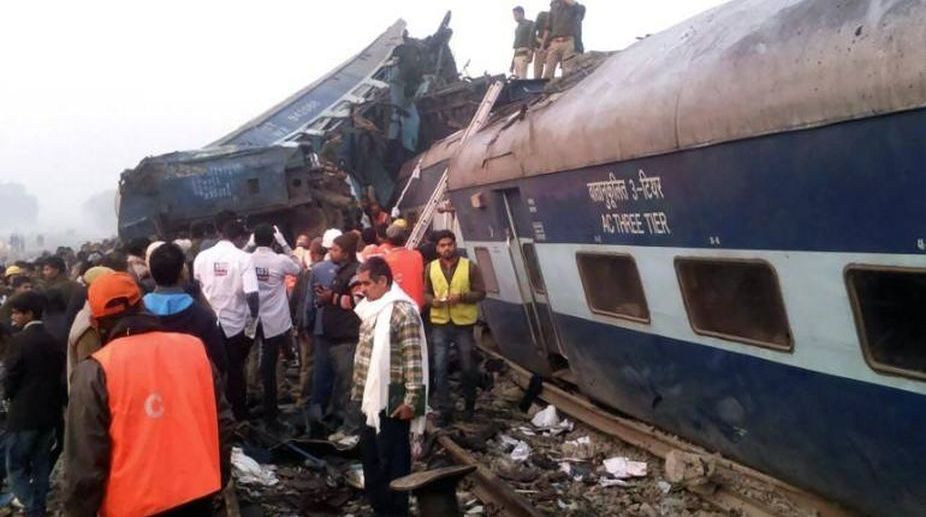New Orleans
Terror The New Year’s Eve attack in New Orleans, when an US Army veteran drove a truck into a crowd of revellers, has shaken America and raised difficult questions about the rising threat of ISIS-inspired violence in everyday spaces.

(Photo: Facebook)
In the last few years, the National Investigation Agency (NIA) has cracked a series of cases where it has come to light that a number of Indian youngsters are straying towards Islamic radicalisation. The youth are encouraged to go to Syria and adjoining battle-torn regions to join ranks with ISIS.
The probe into the IED explosion on the Bhopal-Ujjain passenger train has revealed a few of the names of the accused. It would be interesting to know the background of these youngsters as also factors influencing them to convert to radicalism.
Advertisement
Kanpur based 23-year-old Atif Muzaffar is one such person. His elder brother Asad Muzaffar is an Aleem of Nadwatul Madarsa. Most significantly, Student Islamic Movement of India ( SIMI) and ex Indian Mujahdeeen ( IM) cadres were highly influenced by ideology of the Nadwatul – the owner of the Nadwatul Madarsa. Further, Nadwatul had posted a letter on social media in favour of Abu Bakr al-Baghdadi and also recommended the raising of an army of Sunni Muslims to help establish an ISIS-like caliphate.
Advertisement
A college dropout from Aligarh, Atif was under the spell of Dr Zakir Naik. Naik’s propaganda literature and his sermons on Peace TV were a crucial factor in Atif’s radicalisation. He and his affiliates also joined Tabligi Jamaat on a full time basis with additional education in Ahle Hadith. It would also be pertinent to state that most of the IM recruits had undergone motivational courses by Tabligi Jamaat and subsequently adhered to Ahle Hadith. Atif and his colleagues also learnt how to make IEDs and other
explosives.
Buoyed by ultra Islamic doctrines influencing the youth, Atif Muzaffar was appointed Ameer of the group owing formal allegiance to the ISIS. His immediate associates were Saif (killed in the Lucknow encounter), Md Danish (arrested), Junaid, Asif, Imran and Ahsan. Notably, all were/are in their late twenties.
Later, they formed a core group and proceeded to Jammu and Kashmir with the aim of contacting a Pakistani terrorist group that would not only help them abet terror in Kashmir but also facilitate their eventual migration to Syria to join ISIS. For this, they made desperate attempts to go to Pakistan and even tried access through Jaisalmer when going via Kashmir looked tough.
This group also attempted to radicalise more youngsters by visiting Gujarat, Bengal and Kerala. They even tried to gain access to Bangladesh. One ex Indian Air Force officer, referred to as GM Sahab, remained the principal motivator of this group and imparted training on handling of fire arms and choosing targets. Firing practice was brazenly held on the banks of Ganga and they were already in possession of weapons and live ammunition procured through clandestine means. What’s even more confounding is why these firing sessions did not attract attention of the authorities? This must have further emboldened the group to carry on their radicalisation agenda.
On October 11 last year, the group under GM Sahab, made a plan to target the Prime Minister as their ‘intelligence’ knew in advance about PM’s plans to address a Dushera rally in Lucknow. It’s, therefore, clearly evident that this group apart from being well versed in IEDs and and the use of fire arms, was focusing on garnering hard intelligence and was clearly thinking of targeting the PM in an obvious attempt to get international attention and publicity.
Fortunately , the PM was not harmed thanks to the impregnable security arrangements, though the group did manage to plant IEDs on the roadside to target the crowd. There was an explosion but did not cause much impact. The perpetrators were, however, disappointed to see scant media coverage of the detonation.
These revelations are based on a thorough NIA interrogation of the arrested youngsters. We don’t quite know how many more Atifs are waiting in the wings to strike, but it is clear that radicalisation of youngsters is actively on and their nexus with the ISIS leadership appears established.
The NIA is already working towards dismantling such groups. What we also need is for members of civil society to intervene and use their good offices to prevail upon such youngsters to refrain from becoming extremists. It isn’t and cannot be allowed to remain the sole responsibility of the state. Society must rise to meet the challenge.
The writer, a retired IPS officer, is a security analyst who contributes on core security issues. The views expressed are personal.
Advertisement